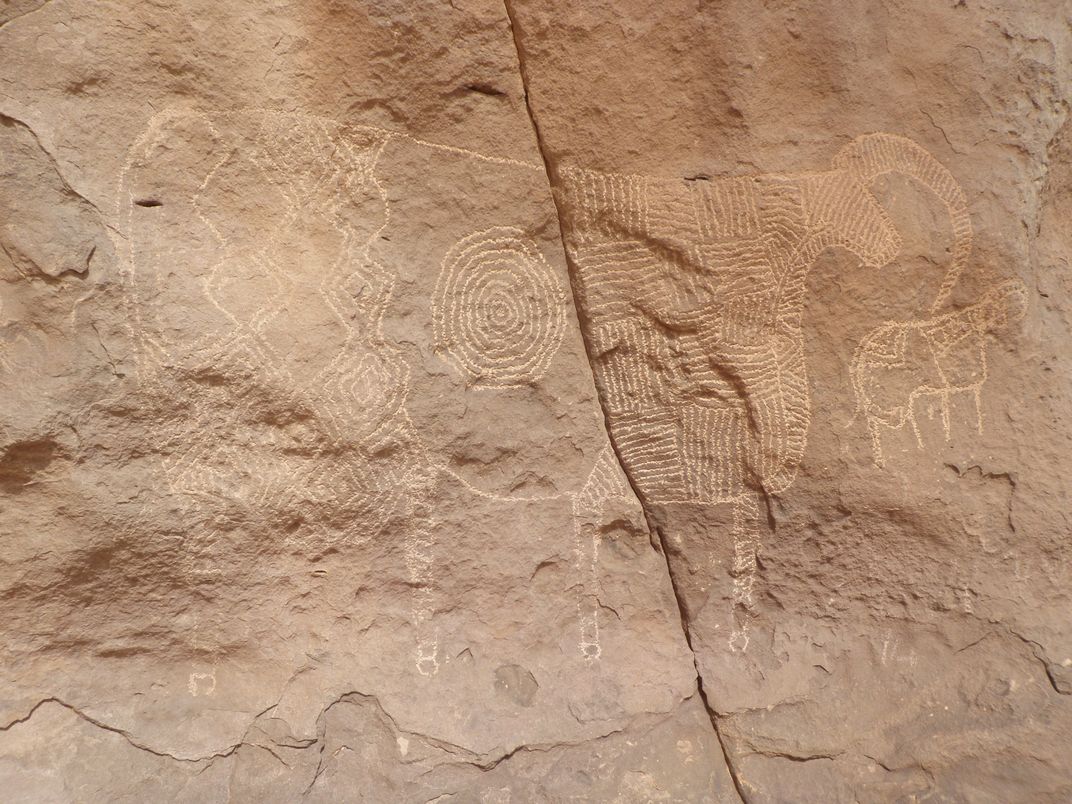Vandals Deface Rock Art In Chad’s Ennedi World Heritage Site
Names were written in French and Arabic on some of the area’s rock art, which can date back as far as 8,000 years
/https://tf-cmsv2-smithsonianmag-media.s3.amazonaws.com/filer/fa/79/fa796df4-c308-45fe-81dd-4b0134a2203d/site_1475_0014.jpg)
Last July, the United Nations Educational, Scientific and Cultural Organization officially added part of the Ennedi Massif in the Africa nation of Chad to its World Heritage List. While the global body may have respect for the natural landscape of cliffs and canyons, inscribed with one of the largest collections of ancient rock art in the Sahara, it seems a few locals don’t feel the same. The BBC reports that some of the area’s ancient cave paintings and rock art have been defaced by vandals.
According to the BBC, the graffiti artists wrote their names in French and Arabic over some of the paintings. According to AFP, the last inscription is dated January of this year. Authorities believe local youth are involved in the crime. The nation’s cultural minister Mahamat Saleh Haroun calls the act a "tragedy."
“It’s an African story and they wanted to destroy that,” he tells the BBC. “That’s why I’m talking about a tragedy, because it’s part of us.”
Experts have been deployed to Ennedi to assess the damage, and the UN representative for culture in Chad, Abdelkerim Adoum Bahar, tells the BBC he believes the paintings could be repaired.
According to Ra Moon at Atlas of Wonders, the Ennedi Plateau is an arid region full of sandstone arches, spires and bridges similar to formations in southern Utah. African Geographic reports that more than 100 rock art sites have been discovered on the Plateau, some of which date back 8,000 years. The rock art shows a very different world than the arid desert that now surrounds the rocky Ennedi. The art includes animals like cheetahs, giraffes, elephants and rhinos. It also depicts communities of people living on the plateau, and shows dancing, warriors and herdsman tending cattle.
It’s not the first time vandals have attacked priceless rock art. In May, authorities discovered that vandals had scratched hands stencils that were thousands of years old at Tasmania’s Nirmena Nala rock shelter. Some of the handprints were scratched completely off. In August, some boys in Norway scratched a 5,000-year-old image of a skiing man, a piece of rock art that is considered a symbol of the nation. While the boys thought they were improving the art by incising it deeper, they scratched away the original markings. And in 2015, geology students from Ohio State University used a marker to draw a heart and their names over a pictograph of a red horse during a field trip to Utah’s Manti-La Sal National Forest.
